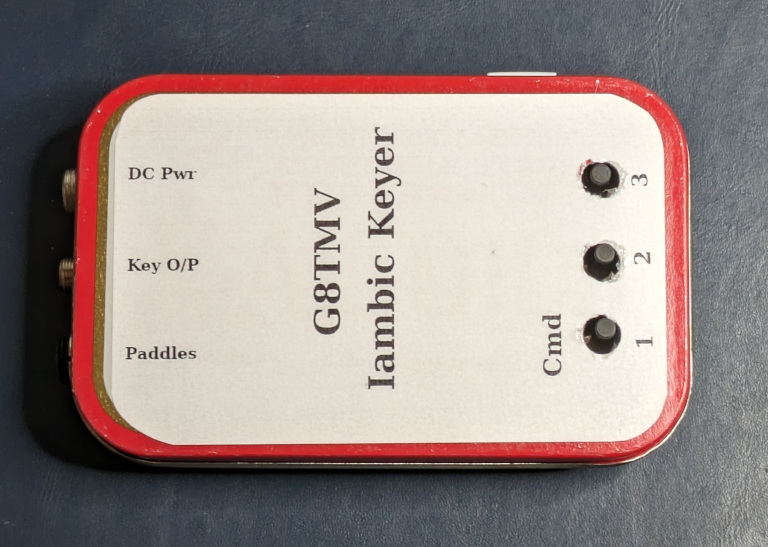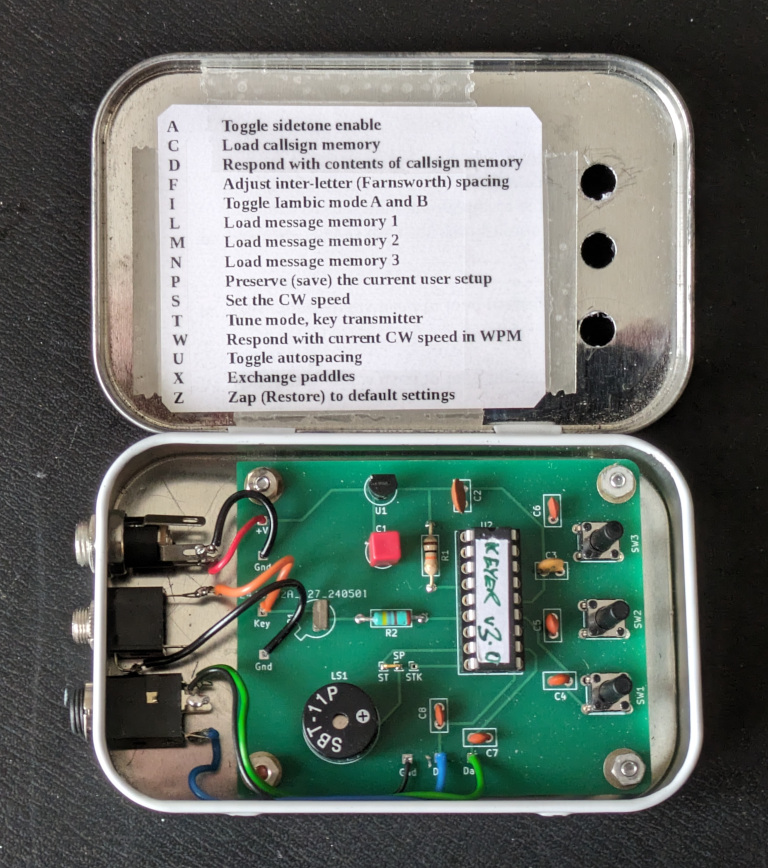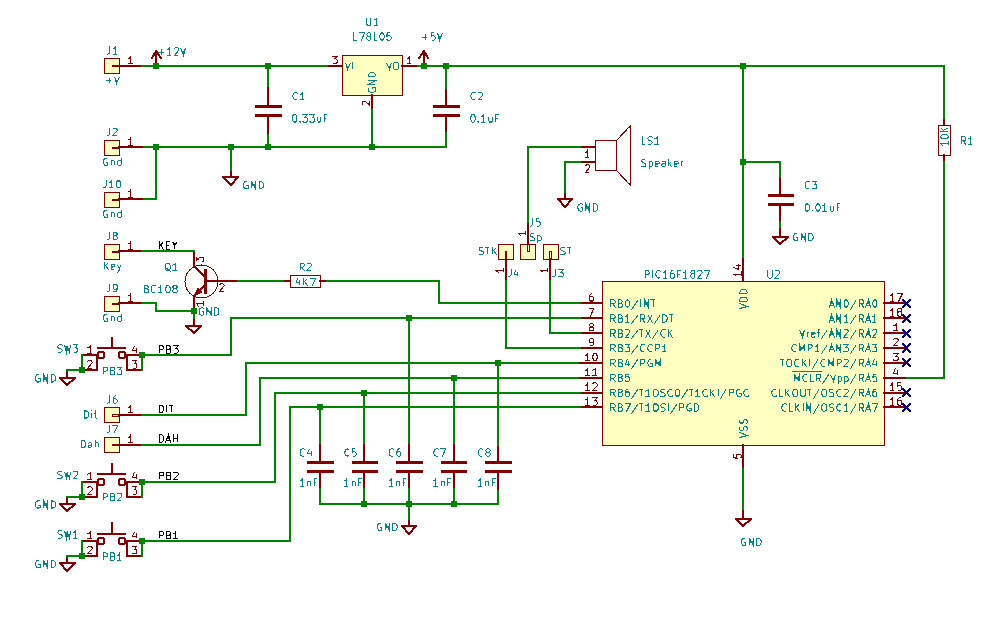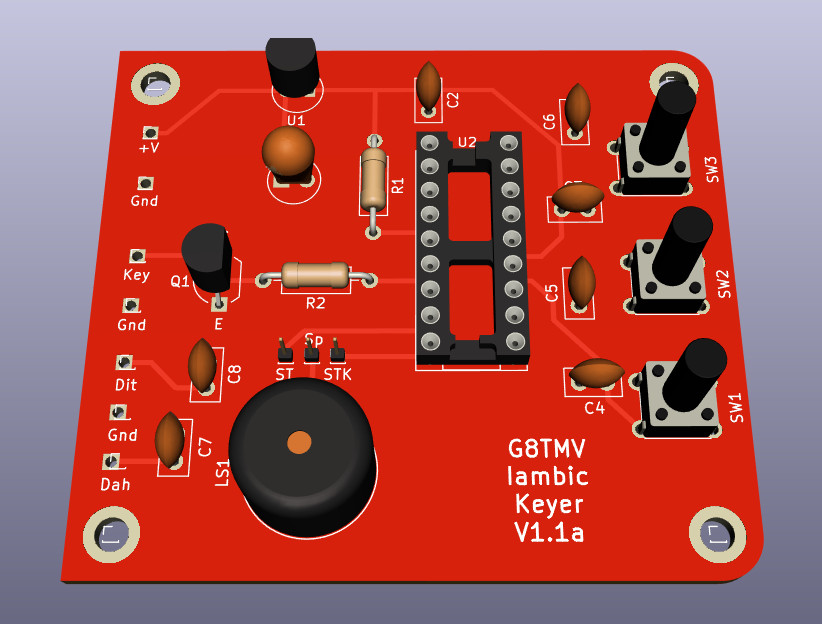
The CW keyer is designed to fit into a traditional Altoids tin.
The basic design started as a clone of an old K1EL shareware keyer intended to be used with
my FT-817. The first prototype got hi-jacked to drive an old WW2 transmitter (see below).
I've made several enhancements and upgrades to the hardware and software to improve usability
and functionality including implementing 3 user loadable non-volatile memories and a separate
callsign memory which can be inserted into any of the stored messages so that the user only
needs to change the callsign once to update all of its uses.
Full details are available in the operating manual available
here.




